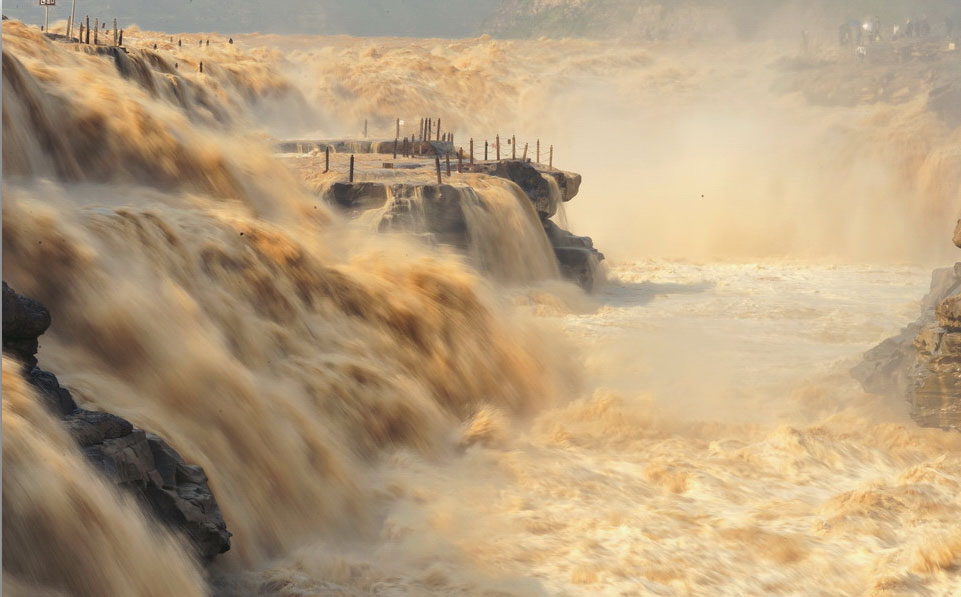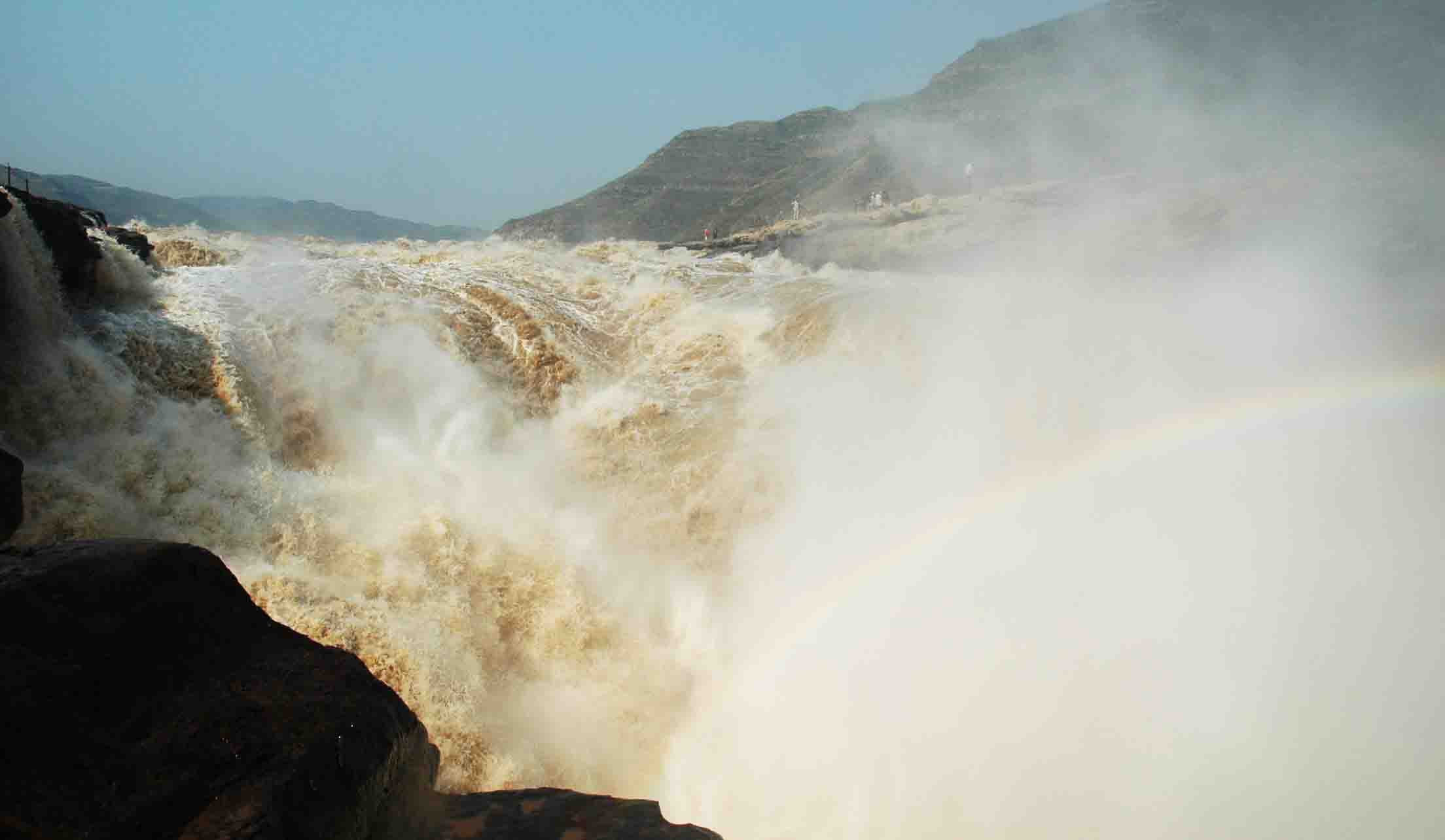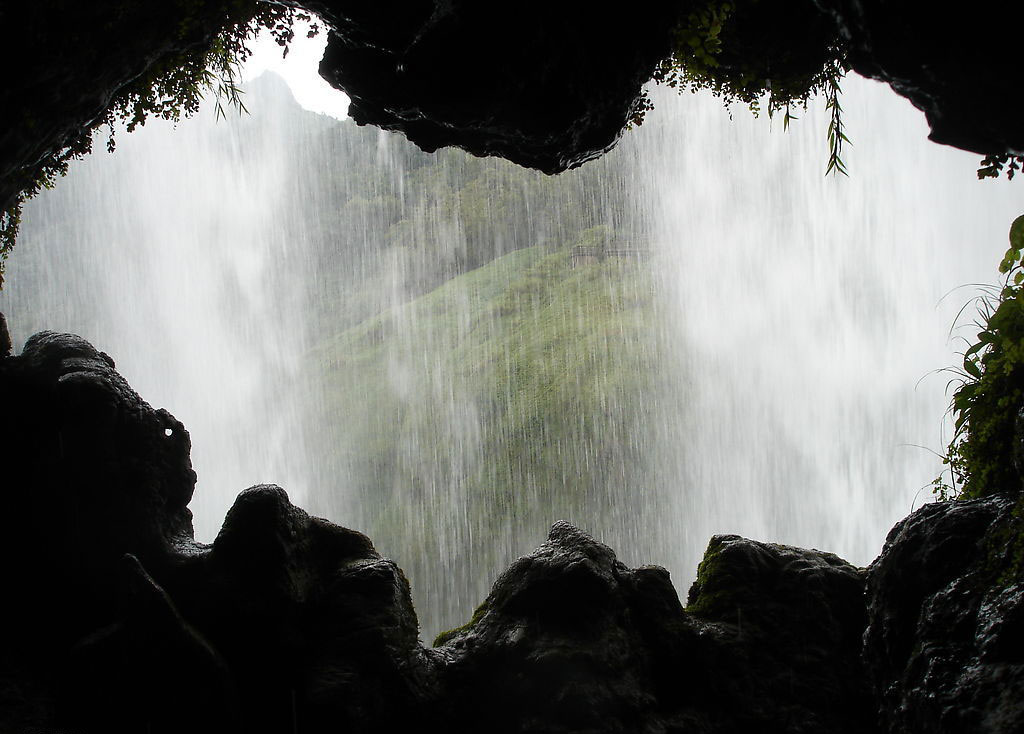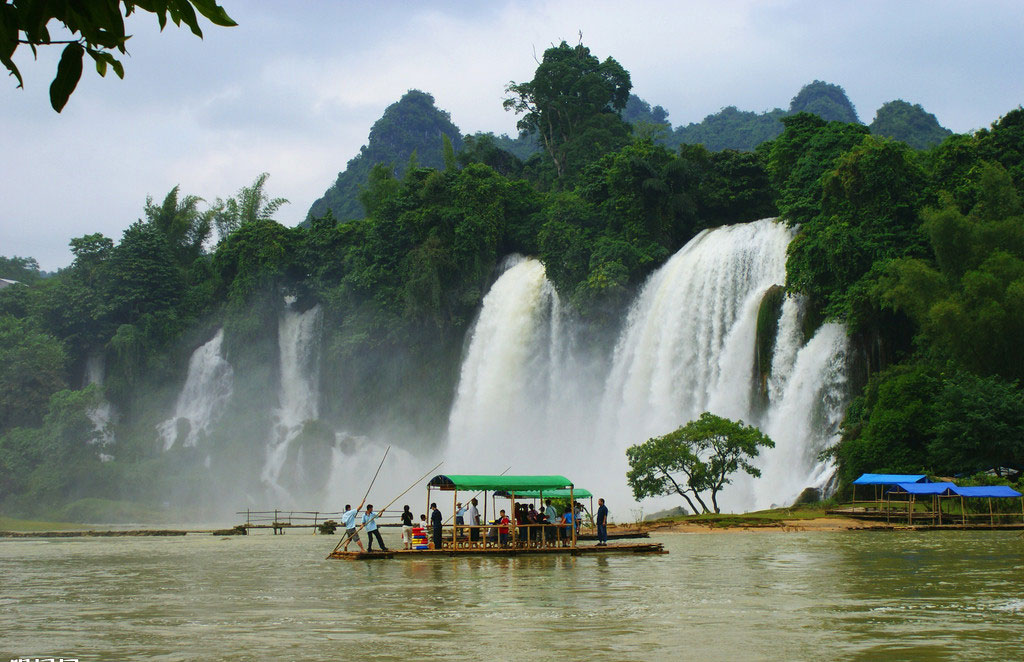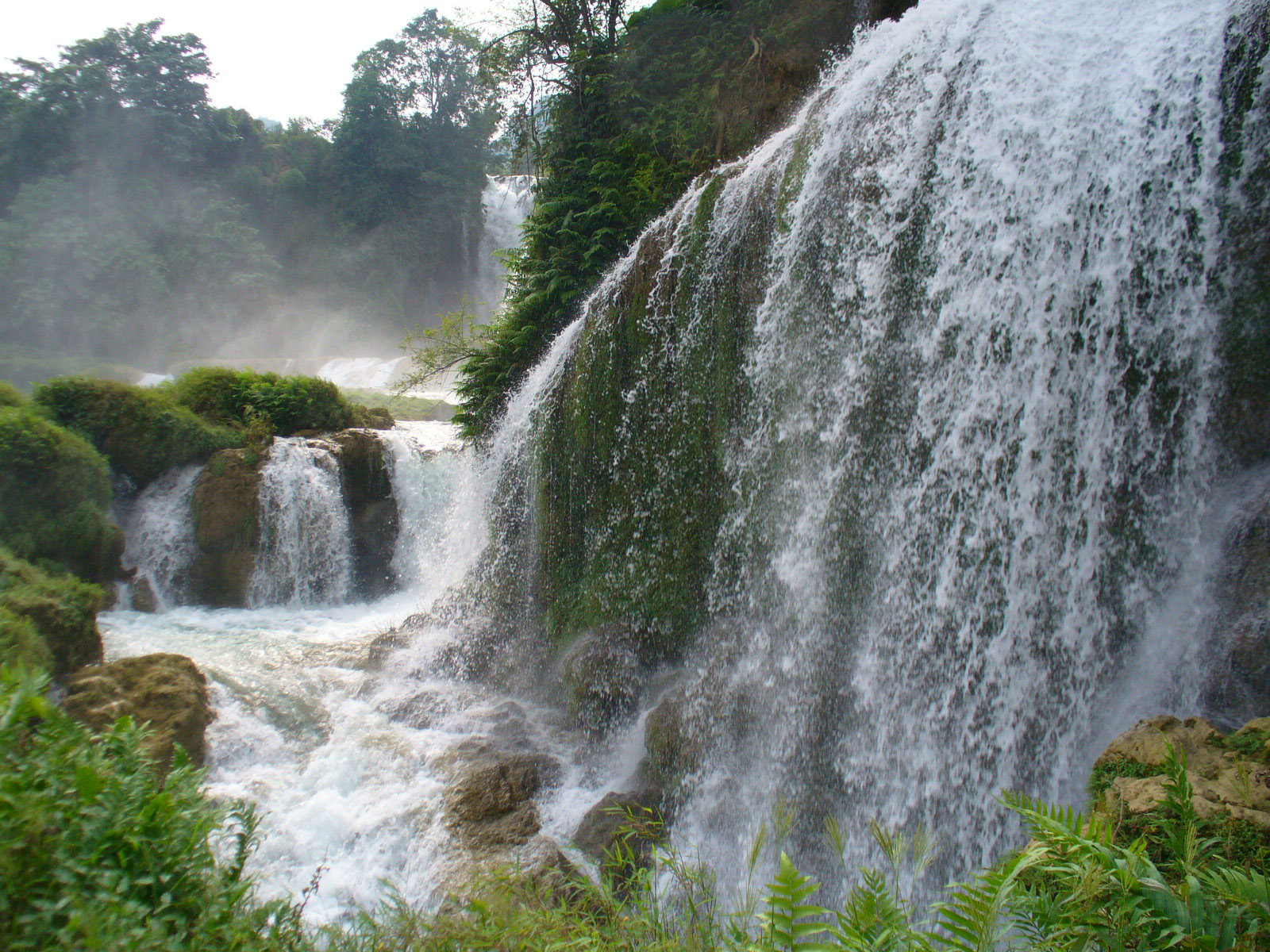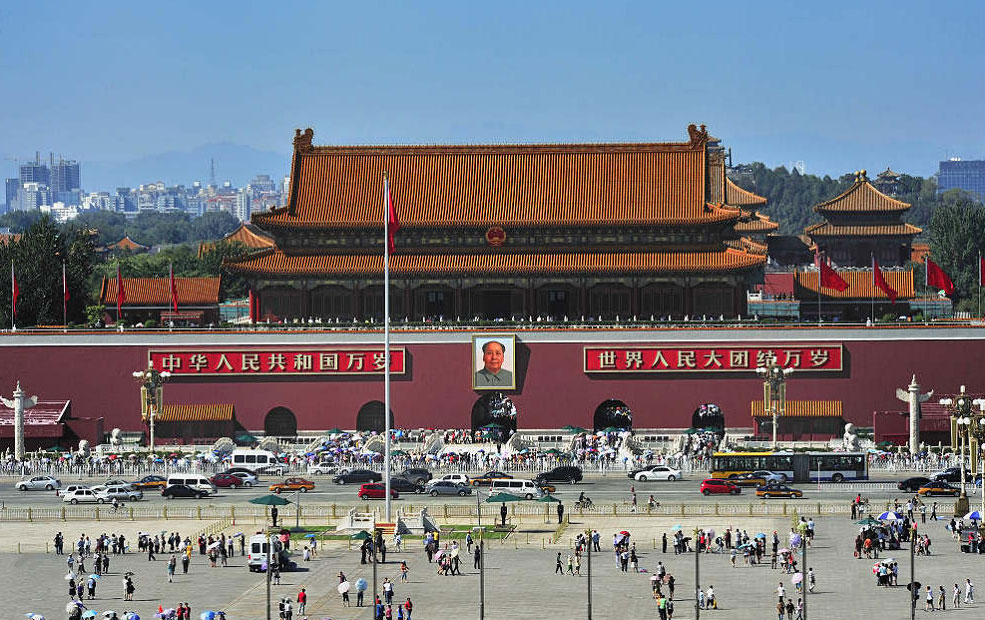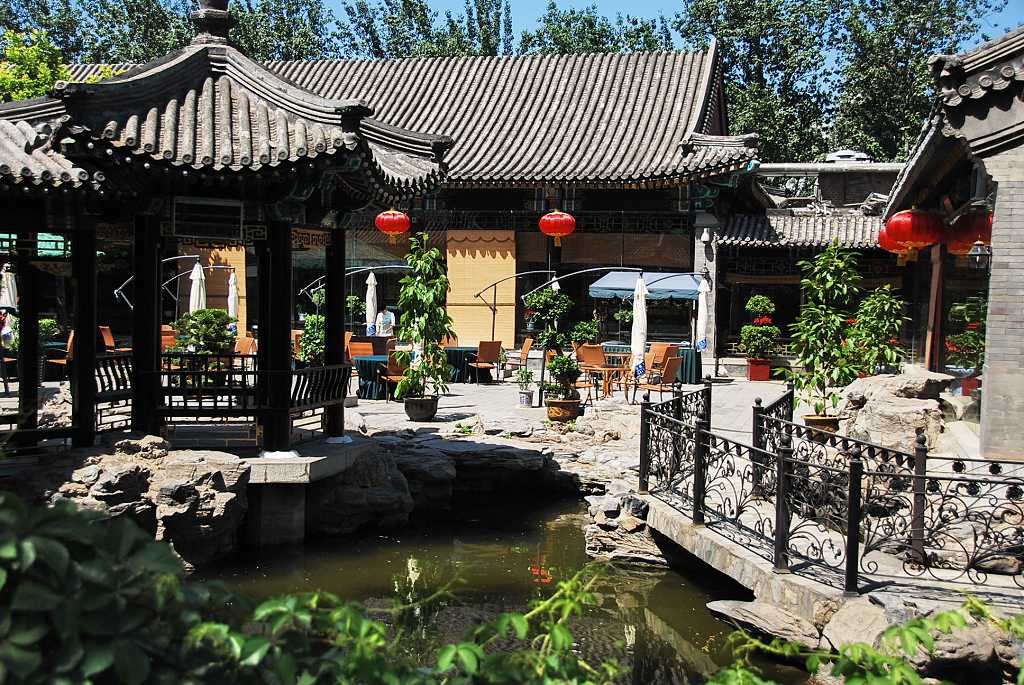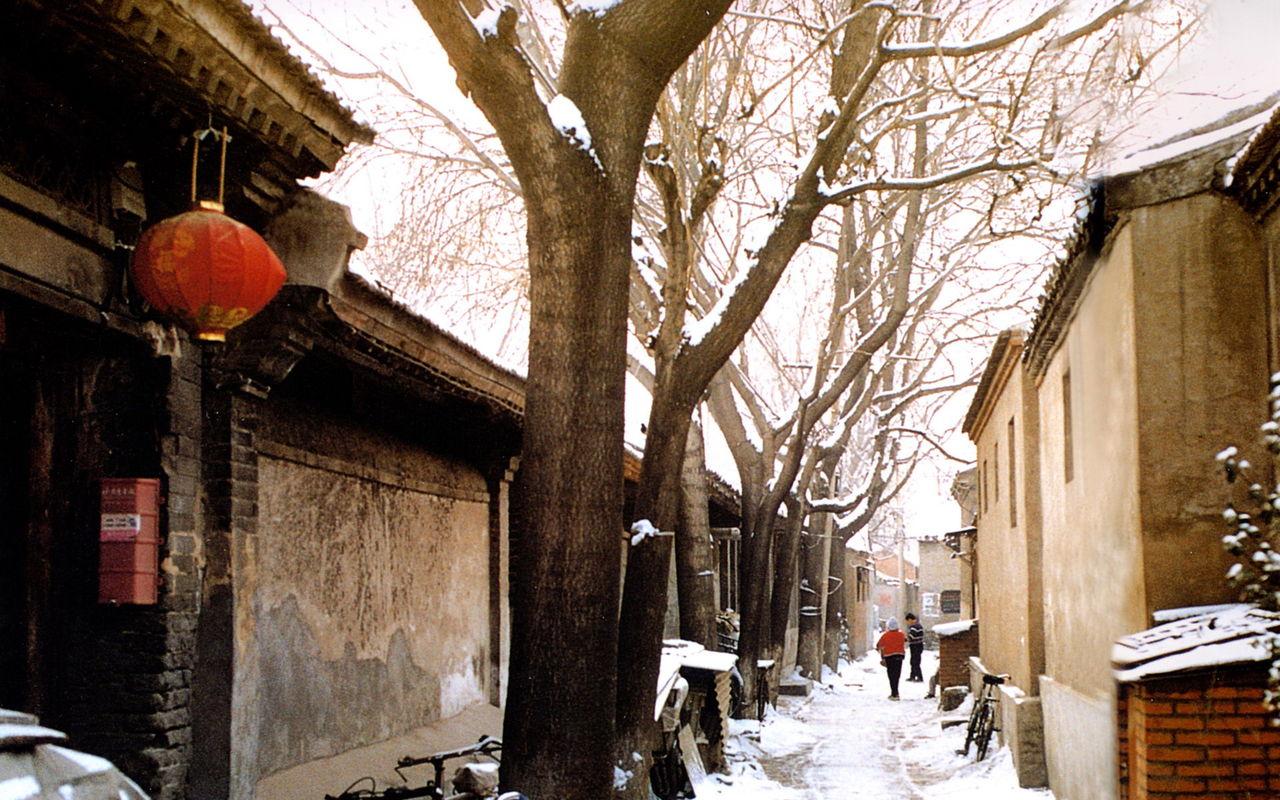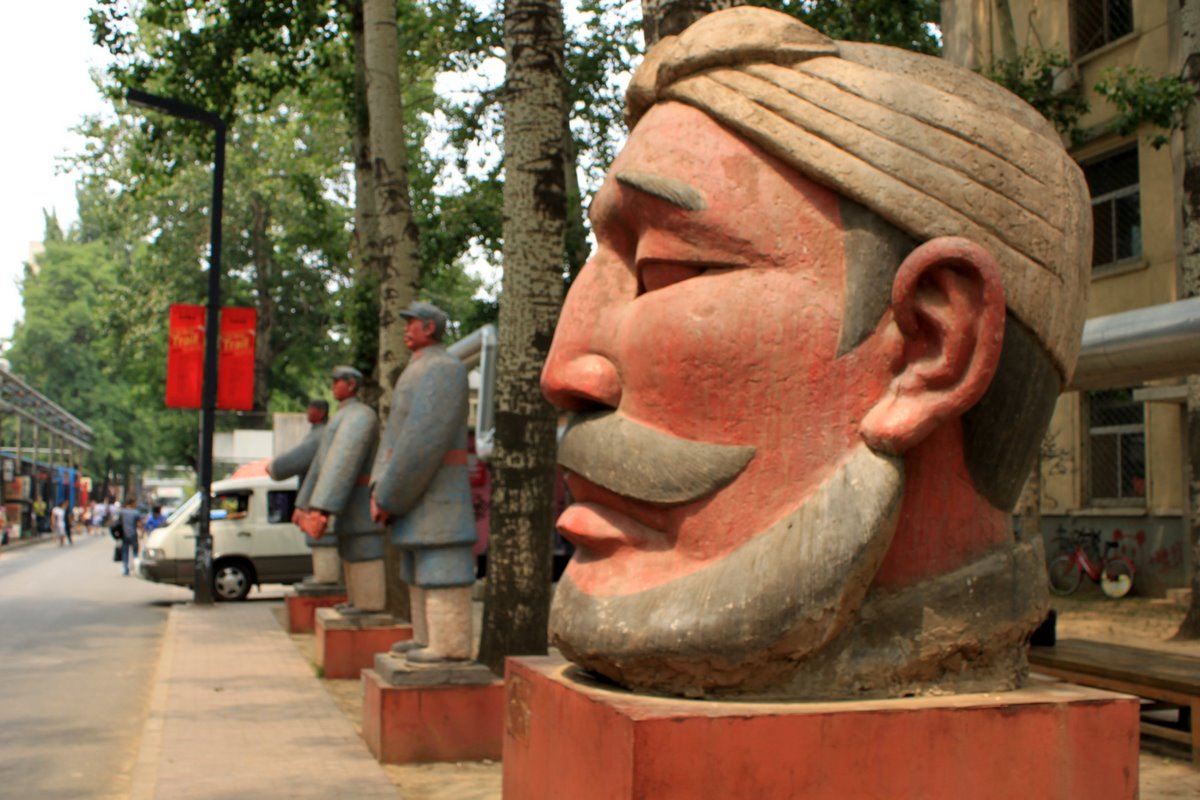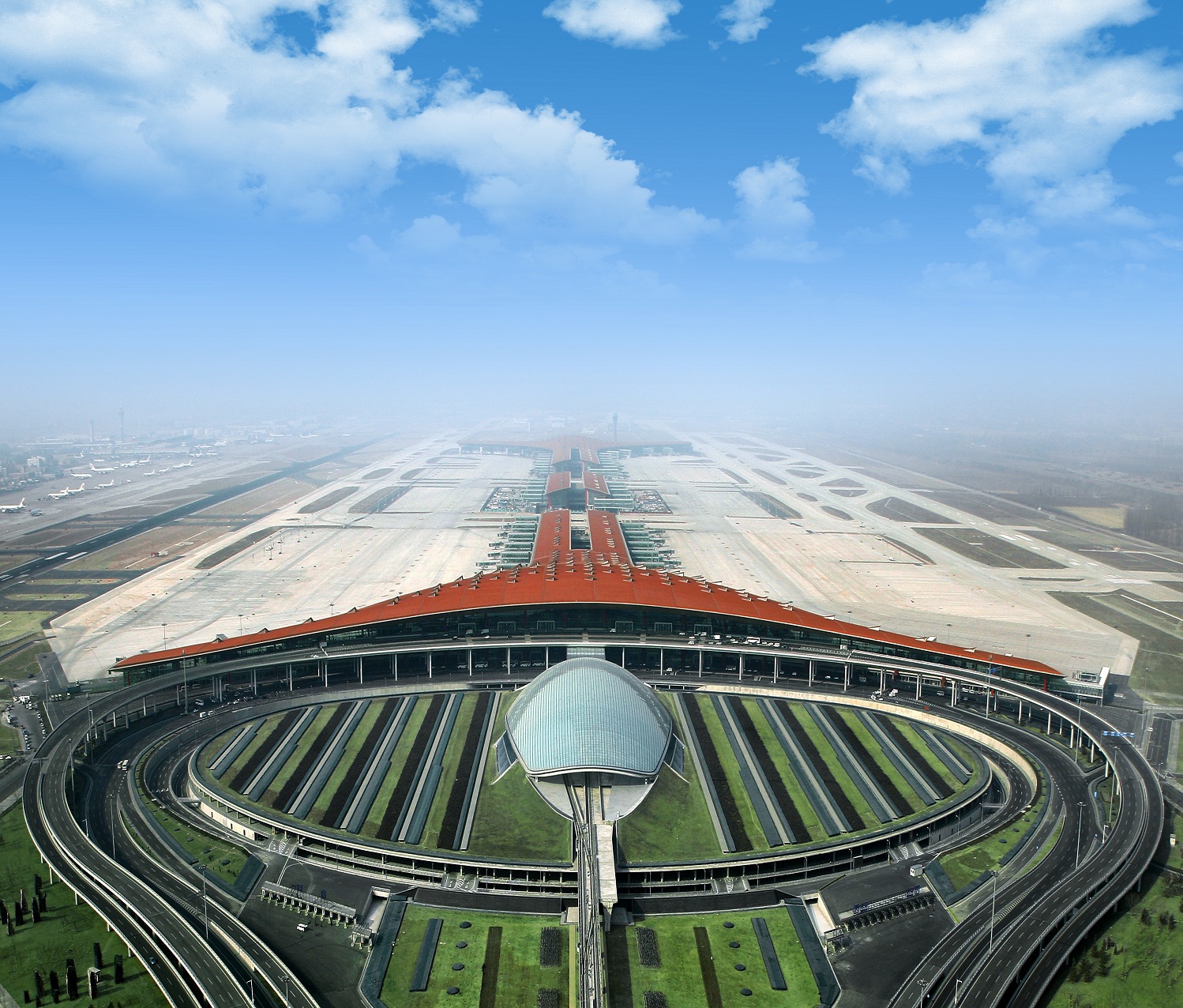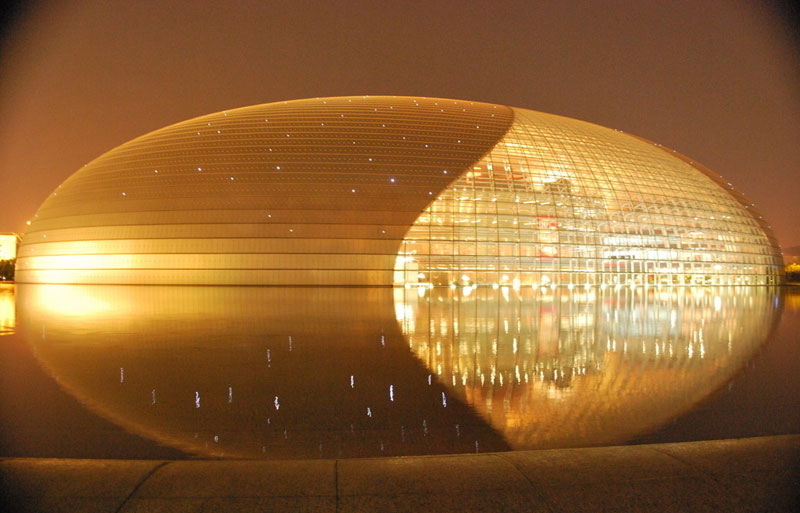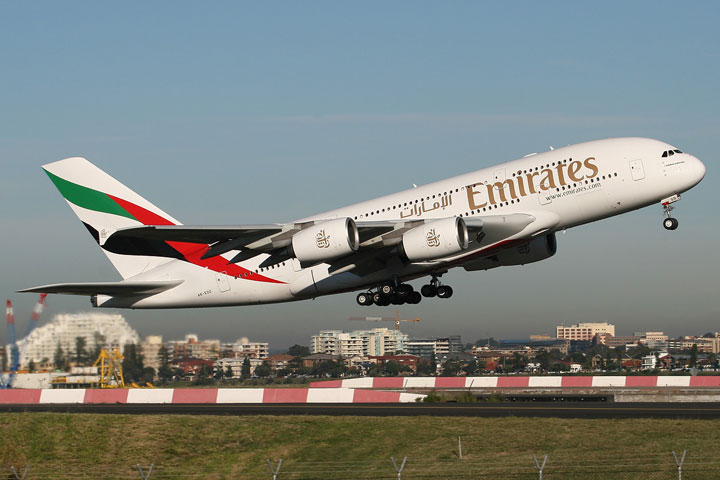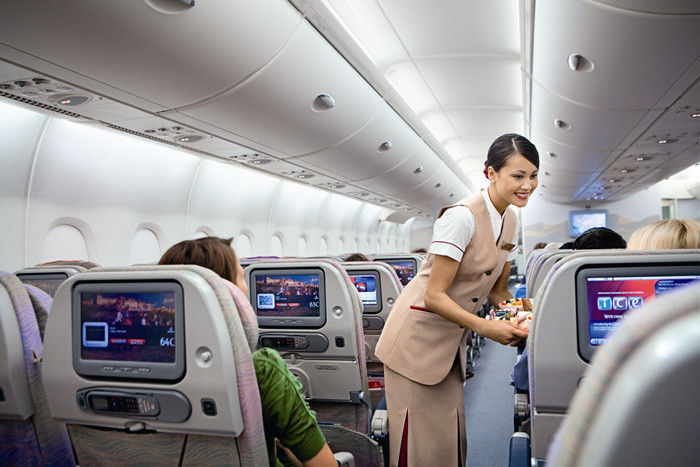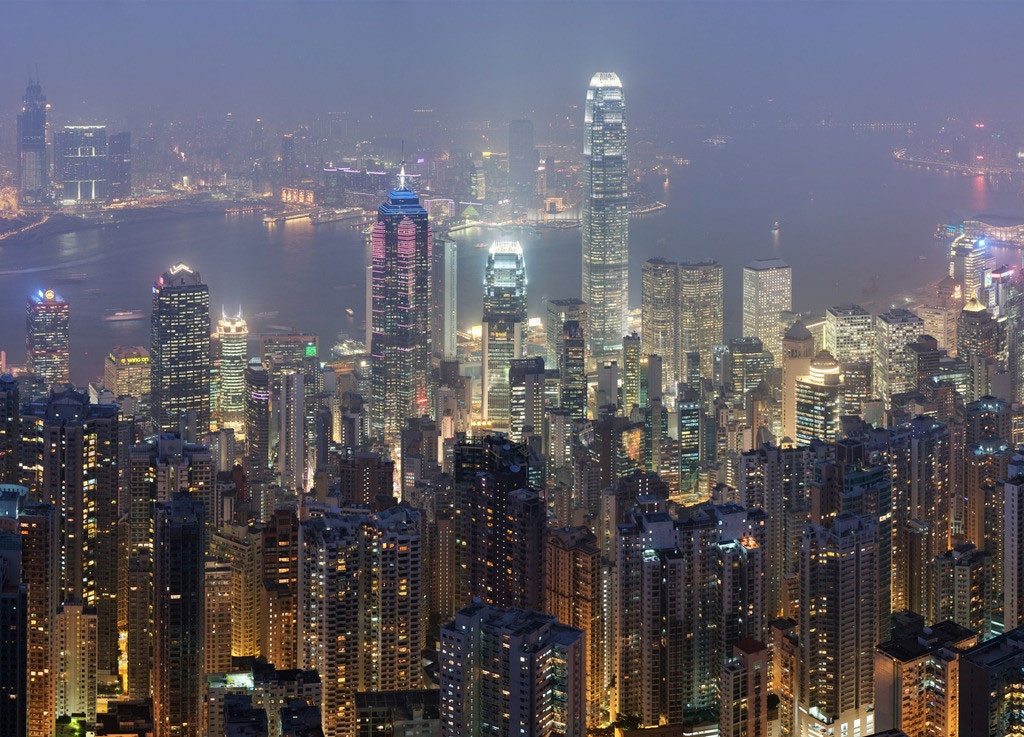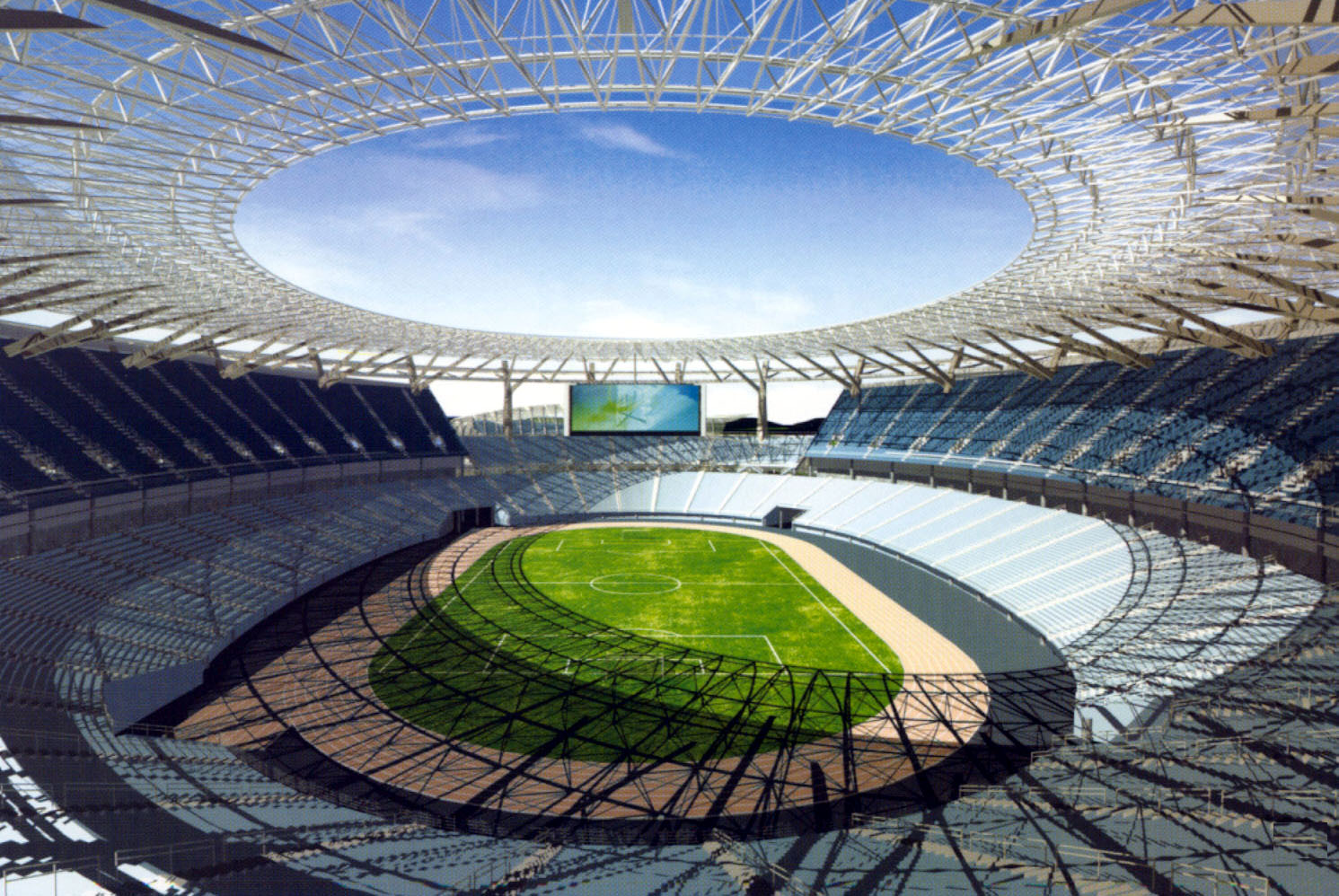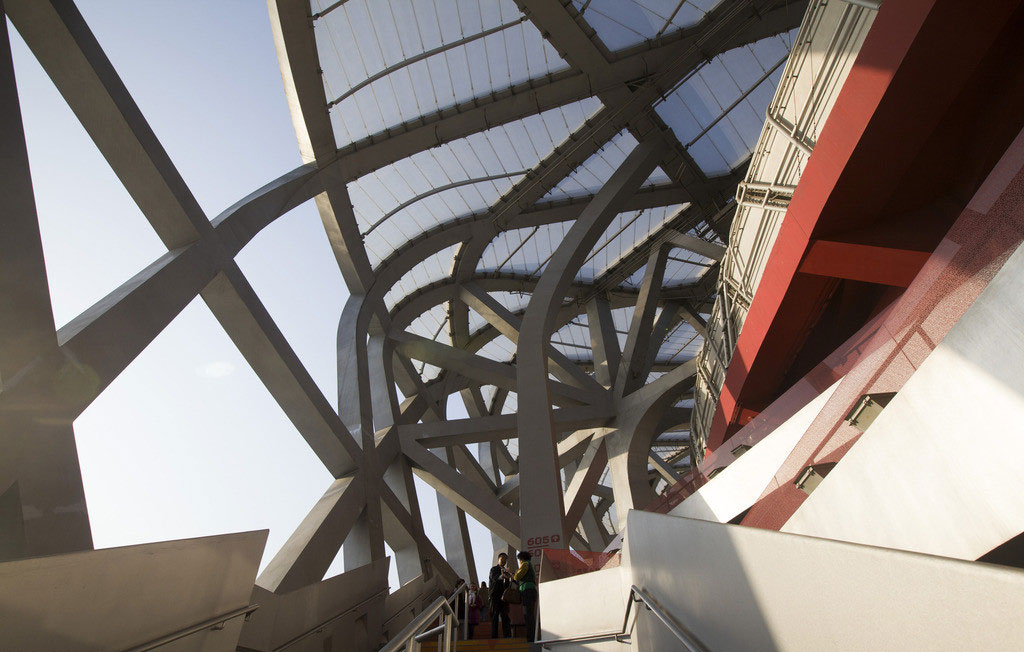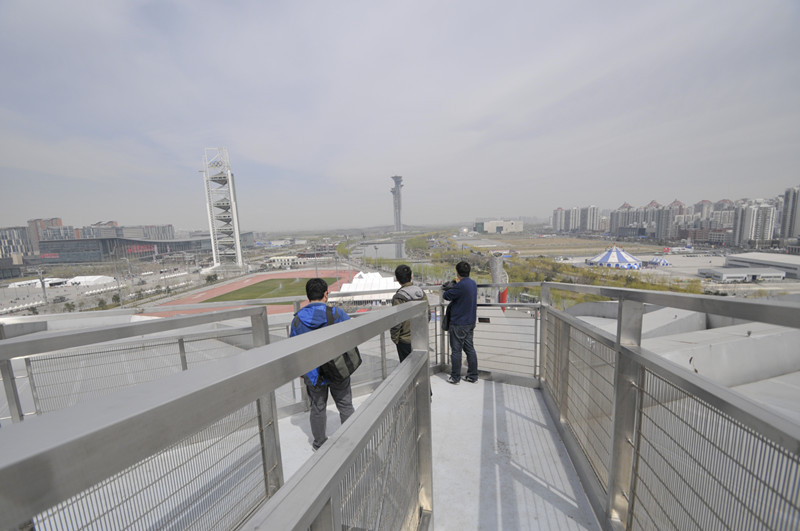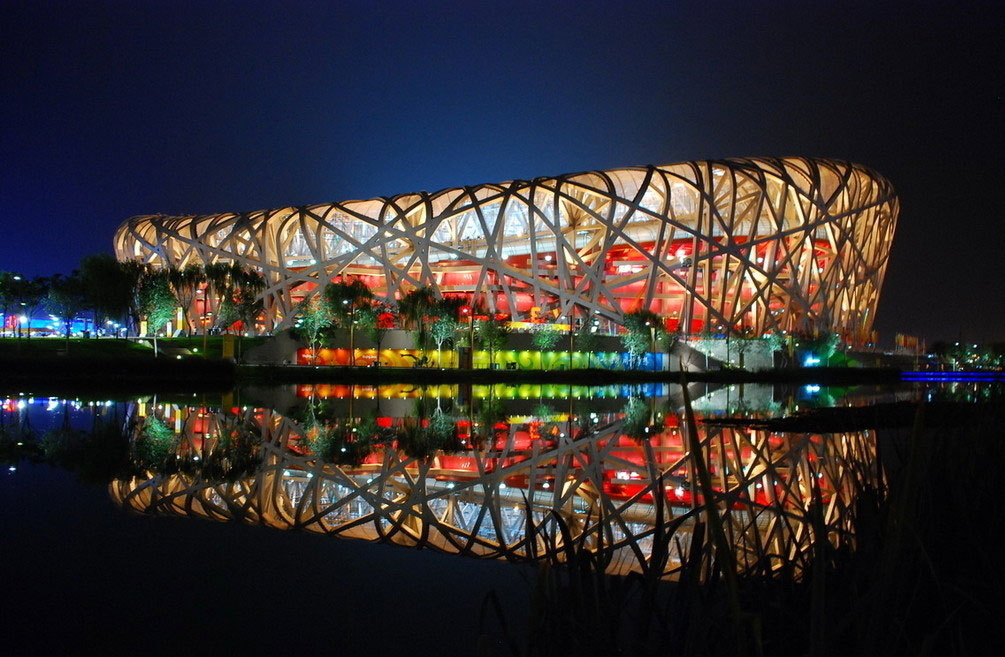It was on the news of May 18, but still SHOCKING! French daredevil
climber Jean-Michel Casanova or 马今 (it is his Chinese name, pronouncing
Majin.) scaled the outside part measuring 172 m (about 564ft) of the
Bailong Elevator, the world’s tallest outdoor elevator in the Wulingyuan
Scenic Area of Zhangijiajie, China.
What’s more, he finished the great challenge in 68 minutes and 26
seconds with no safety equipment, but only his trainers, a vest top and
jogging bottoms!!!
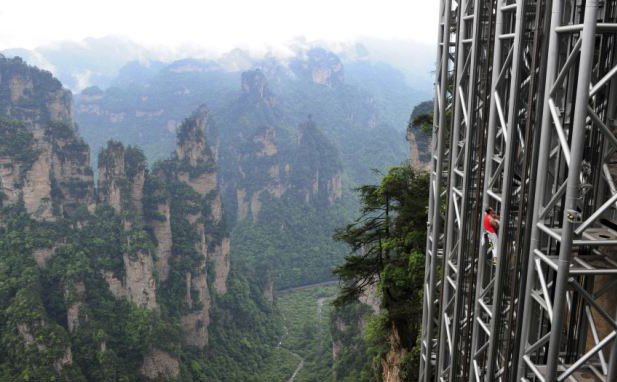
The Bailong Elevator or the Hundred Dragons Elevator is by far the tallest of its kind worldwide, of 335 m vertical height (about 1,083ft) with an outside part of steel structure frame half way en route all the way up. For ordinary travelers, it kindly saves 2 and a half hours to the top, but Casanova pushed himself to the limit, actually once again.
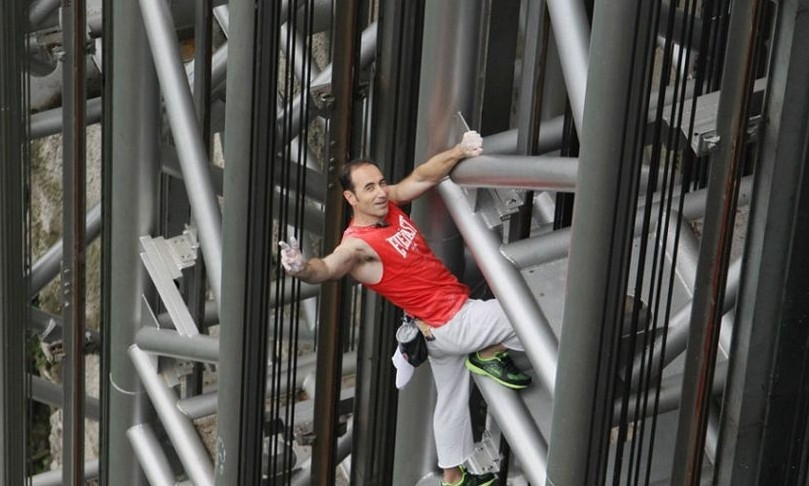
Needless to say, it was really tough with only the help of his arms and legs, as the diameter of the steel tubes were as thick as 150mm, and very slippery, let alone the scary height. However, Casanova joked that it was not a challenge but a relaxing experience with the breathtaking views surrounding. Thanks to the dramatic landscape of Zhangjiajie!
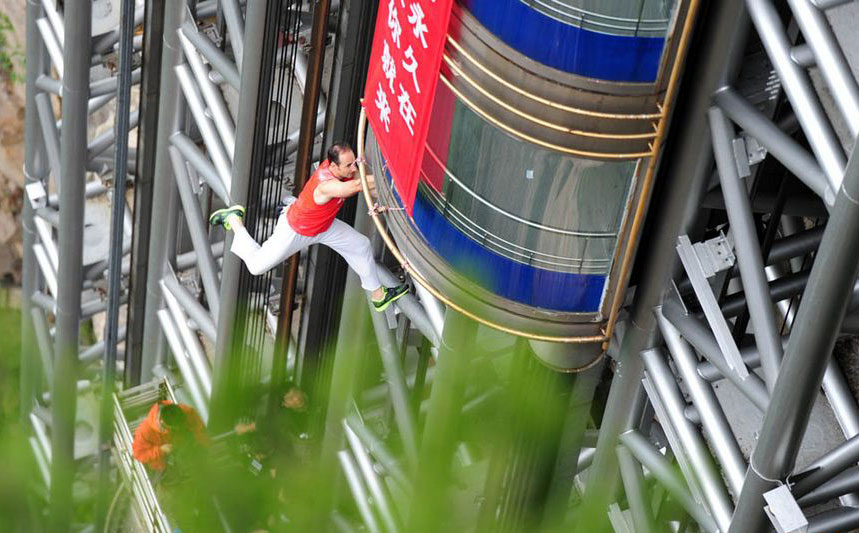
To clime at the dangerous international landmark, it was not Casanova’s first time. He did scaled Paris's Eiffel Tower without a safety harness in 1989, and climbed New York's Brooklyn Bridge while dressed as Spider Man, how cute!
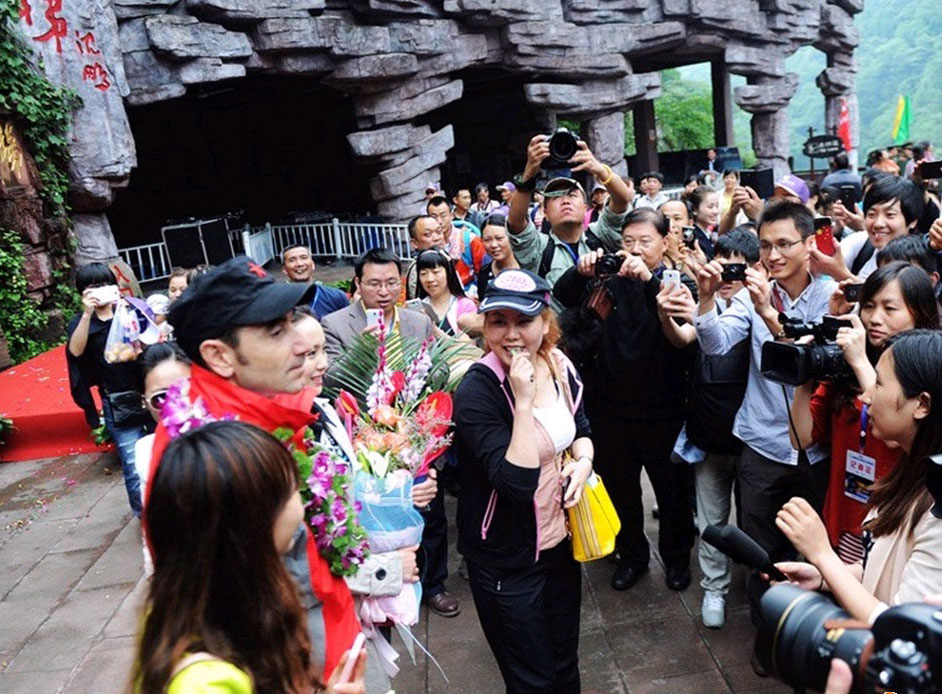

The Bailong Elevator or the Hundred Dragons Elevator is by far the tallest of its kind worldwide, of 335 m vertical height (about 1,083ft) with an outside part of steel structure frame half way en route all the way up. For ordinary travelers, it kindly saves 2 and a half hours to the top, but Casanova pushed himself to the limit, actually once again.

Needless to say, it was really tough with only the help of his arms and legs, as the diameter of the steel tubes were as thick as 150mm, and very slippery, let alone the scary height. However, Casanova joked that it was not a challenge but a relaxing experience with the breathtaking views surrounding. Thanks to the dramatic landscape of Zhangjiajie!

To clime at the dangerous international landmark, it was not Casanova’s first time. He did scaled Paris's Eiffel Tower without a safety harness in 1989, and climbed New York's Brooklyn Bridge while dressed as Spider Man, how cute!

